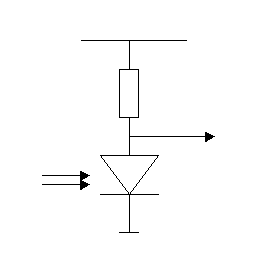

The signal from the photodiodes are amplified by operational amplifiers (usually) and fed to a logical device.
Logic for determining the direction of rotation of the handle is simple enough when you drop a logical "1" to a logical "0" at the output of the Photocoupler 1 to monitor the signal level at the optical coupler 2. If there is "1" - twist the handle clockwise (step up), if there is "0" to twist the handle counter-clockwise (step down).
Manufacturing complexity is the large number of lathe and milling operations, the manufacture of the disk with sector count more than 20, and in the adjustment of the position of the optocouplers. Many take the optical mechanism from computer "mice". In this case, the only difficulty is to disassemble the mouse, mark the Pinout of the diodes and install in your device mechanics.
The number of steps my instance was 34, which will give in steps of 25 kHz 850 kHz per revolution or 425 kHz in steps of 12.5 kHz. So it became clear that levels with the "mouse" photodiodes enough to switch logic gates CMOS without amplifiers at the shelter.

Mouse come with conventional photodiodes and dual. Twin photodiodes have a common anode and are not suitable for our purpose (although it can be subverted).
As such, volkoder can be used to control any device. In my case, I didn't want to complicate the program and put a small decoder on LA (who came up with Igor, RA9UWD with a bottle of beer):

At the entrance serves the pulses from the opto-couplers, the output: when the knob is at one of the outputs present a sequence of pulses on the other output is a logical "1". During rotation of the handle in the other direction outputs are swapped. As such, volkoder can manage cascaded counters on IE (IE7) or my control unit "beacon". The outputs of volkoder connected to the place (or both) of the buttons "up" and "down". The diodes remain as in the original version.
Authors: RW9UAO, Sergei, Yaya, RA9UWD, Igor, Yaya; Publication: N. Bolshakov, rf.atnn.ru






